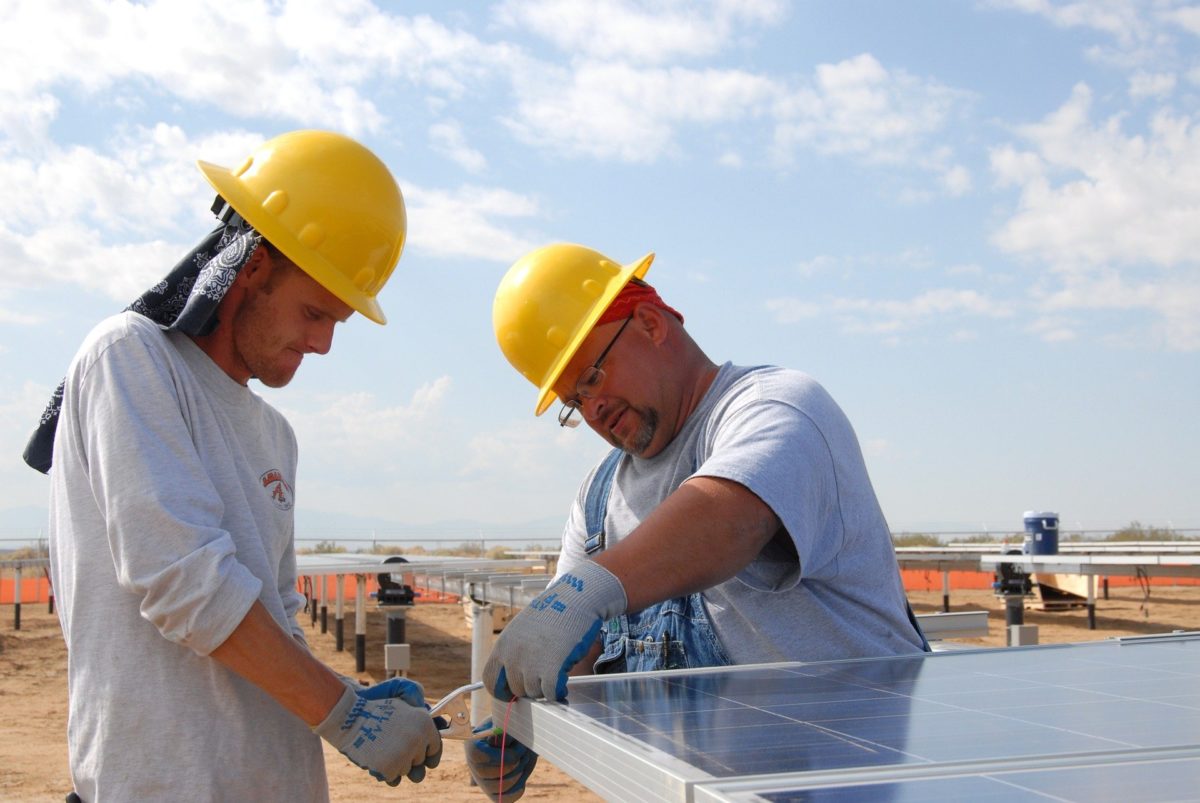When the Australian Energy Market Operator (AEMO) put out its integrated System Plan in July last year, it included four possible scenarios. The most ambitious was its Step Change scenario. It is also the only scenario, according to Solar Citizen’s report, which is compatible with limiting climate change to within 1.4°C to 1.8°C.
Focussing on Queensland, the community group determined the state would see more than double (233%) the amount of large-scale solar and wind generation built by 2030 than currently exists or is committed, while rooftop solar capacity modelled to become four times greater than Queensland’s largest coal generator, if AEMO’s Step Change scenario were adopted.
According to its modelling, approximately 43,500 clean energy job years would be created in the construction and installation of solar, wind and distributed storage by 2030 and an additional 2,000 jobs in operations and maintenance if global, state and federal governments choose ambitious emission reduction policies.
Those calculations do not even account for potential jobs in large-scale battery storage, pumped hydro or hydrogen projects, the report adds.
Rooftop solar
Under Solar Citizen’s modelling of the scenario, Queensland’s rooftop solar capacity grew to over 7000 MW by 2030. That translates to the creation of an additional 21,900 installation job years, and 750 jobs in operations and maintenance.
“By 2040 this grows to more than 9,200 MW and creates a further 12,700 installation job years, and another 440 jobs in operations and maintenance,” the report says.
Distributed Batteries
Also modelled to thrive under the Step Change, distributed battery storage could grow its capacity to 1,250 MW by 2030. “This growth would underpin 6,500 installation job years by 2030, and 350 jobs in operations and maintenance. By 2040 this grows to more than 2,350 MW and creates a further 6,100 installation job years, and another 330 jobs in operations and maintenance,” the report reads.
Beyond 2030
Following the Step Change path would see even more sizeable benefits in the more distant future, according to the report. “By 2040, a total of 92,600 construction and installation job years would be created, and 4,600 in operations and maintenance. Averaging the number of construction and installation job years over the 20 year period equates to over 4,600 ongoing jobs over that period.”
By comparison, AEMO’s Central scenario, which reflects Australia’s current path, would see 21,700 fewer job years in the construction and installation of solar, wind and distributed battery storage by 2030. “By 2040 this will grow to a total of 43,300 fewer construction and installation job years. The Central scenario would also see almost 2,000 fewer jobs in operations and maintenance by 2040.”
Major drawcard
Jobs creation has been a key drawcard for the push towards renewables worldwide, with numerous government’s turning to new renewable energy infrastructure to recover economically from the Covid-19 pandemic in 2020. In Australia, the Million Jobs Plan released last year by think-tank Beyond Zero Emissions envisioned a green scaffold on which Australia’s economy could rebuild and create 1.8 million new jobs through renewables and low emissions projects. Widely lauded, New South Wales, Victoria, and other smaller state state governments have since released state budgets that focus on renewable infrastructure and emission cutting technologies to create jobs and reboot the economy.
This content is protected by copyright and may not be reused. If you want to cooperate with us and would like to reuse some of our content, please contact: editors@pv-magazine.com.









1 comment
By submitting this form you agree to pv magazine using your data for the purposes of publishing your comment.
Your personal data will only be disclosed or otherwise transmitted to third parties for the purposes of spam filtering or if this is necessary for technical maintenance of the website. Any other transfer to third parties will not take place unless this is justified on the basis of applicable data protection regulations or if pv magazine is legally obliged to do so.
You may revoke this consent at any time with effect for the future, in which case your personal data will be deleted immediately. Otherwise, your data will be deleted if pv magazine has processed your request or the purpose of data storage is fulfilled.
Further information on data privacy can be found in our Data Protection Policy.